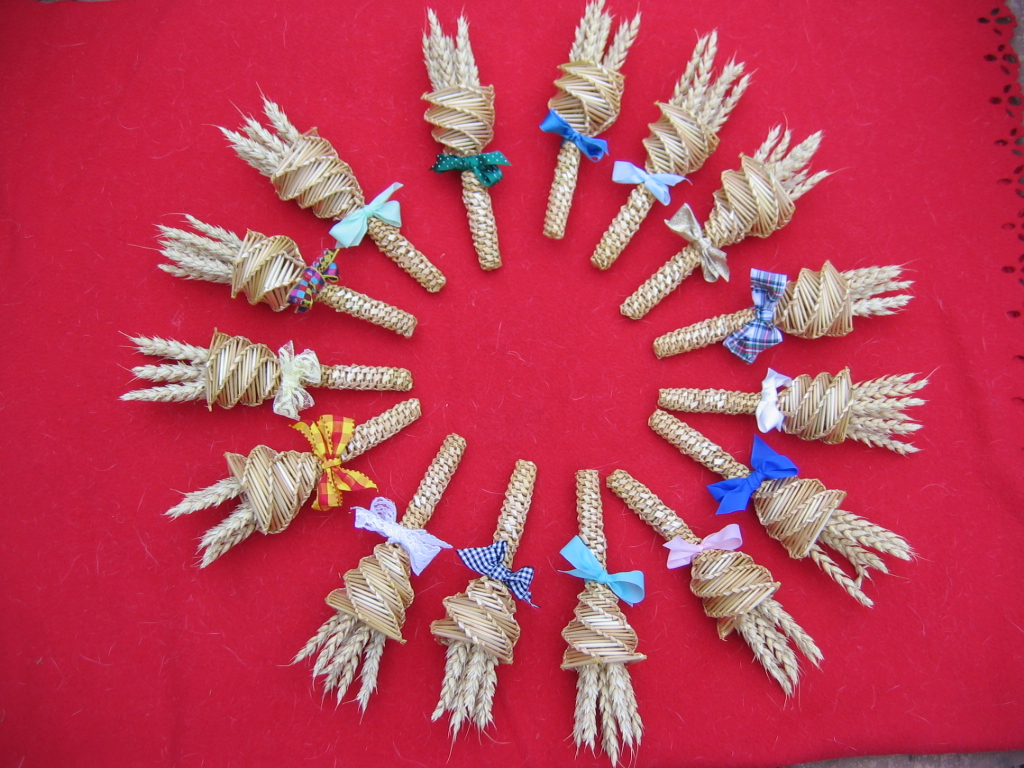|
The Crystal Prison
''The Crystal Prison'' is a dark fantasy novel for children by British author Robin Jarvis. It is the second book in ''The Deptford Mice'' trilogy, first published in the United Kingdom in 1989 by Macdonald & Company, London. In 2001, it was published by SeaStar Books in the United States. The book continues the story of the young house mouse Audrey after she and her friends have defeated the evil cat Jupiter, lord of the sewer rats. Plot The story picks up shortly after the last book left off. Albino mouse Oswald Chitter is deathly ill, having caught an infection during his time in the Deptford sewers battling the villainous cat Jupiter with his friends. In caring for him, Oswald's parents have become sick as well. They are now being tended to by their friends the Browns, city mouse Piccadilly, and Oswald's fieldmouse cousin Twit. Midshipmouse Thomas Triton arrives with news that the Starwife, the wise and ancient queen of the squirrels, has summoned Audrey to her chambers s ... [...More Info...] [...Related Items...] OR: [Wikipedia] [Google] [Baidu] |
Robin Jarvis
Robin Jarvis (born 8 May 1963) is a British Young-Adult fiction (YA) and children's novelist, who writes dark fantasy, suspense and supernatural thrillers. His books for young adults have featured the inhabitants of a coastal town battling a monumental malevolence with the help of its last supernatural guardian (The Witching Legacy), a diminutive race of Werglers (shape shifters) pitched against the evil might of the faerie hordes (The Hagwood Trilogy), a sinister "world-switching" dystopian future, triggered by a sinister and hypnotic book (Dancing Jax), Norse Fates, Glastonbury crow-demons and a time travelling, wise-cracking teddy bear. (The Wyrd Museum series), dark powers, a forgotten race and ancient evils on the North Yorkshire coast (The Whitby Witches trilogy), epic medieval adventure (The Oaken Throne) and science-fiction dramatising the "nefarious intrigue" within an alternate Tudor realm, peopled by personalities of the time, automata servants and animals known as Me ... [...More Info...] [...Related Items...] OR: [Wikipedia] [Google] [Baidu] |
Corn Dolly
Corn dollies or corn mothers are a form of straw work made as part of harvest customs of Europe before mechanization. Before Christianisation, in traditional pagan European culture it was believed that the spirit of the corn (in American English, "corn" would be "grain") lived amongst the crop, and that the harvest made it effectively homeless. James Frazer devotes chapters in ''The Golden Bough'' to "Corn-Mother and Corn-Maiden in Northern Europe" (chs. 45–48) and adduces European folkloric examples collected in great abundance by the folklorist Wilhelm Mannhardt. Among the customs attached to the last sheaf of the harvest were hollow shapes fashioned from the last sheaf of wheat or other cereal crops. The corn spirit would then spend the winter in this home until the "corn dolly" was ploughed into the first furrow of the new season. Background James George Frazer discusses the Corn-mother and the Corn-maiden in Northern Europe, and the harvest rituals that were being practised ... [...More Info...] [...Related Items...] OR: [Wikipedia] [Google] [Baidu] |
Tales From Dimwood Forest
Edward Irving Wortis (born December 23, 1937), better known by the pen name Avi,Sandra Q. Williams, American Library Association: . November/December 2005 is an American author of young adult and children's literature. He is a winner of the Newbery Medal and twice one of the runners-up ( Newbery Honor). Biography Avi and his twin sister were born in Brooklyn, New York to Joseph Wortis, an American-Jewish psychiatrist of Russian-Jewish and Alsatian-Jewish descent, and Helen Wortis, a social worker. When he was one year old, his sister gave him the nickname "Avi".About Avi avi-writer.com Two of Avi's grandfathers were writers, and one grandmother was a playwright. In interviews, he recalled his mother reading to him and his sister every night, and going to the |
Avi (author)
Edward Irving Wortis (born December 23, 1937), better known by the pen name Avi,Sandra Q. Williams, American Library Association: . November/December 2005 is an American author of young adult and children's literature. He is a winner of the Newbery Medal and twice one of the runners-up (Newbery Honor). Biography Avi and his twin sister were born in Brooklyn, New York to Joseph Wortis, an American-Jewish psychiatrist of Russian-Jewish and Alsatian-Jewish descent, and Helen Wortis, a social worker. When he was one year old, his sister gave him the nickname "Avi".About Avi avi-writer.com Two of Avi's grandfathers were writers, and one grandmother was a playwright. In interviews, he recalled his mother reading to him and his sister every night, and going to the |
Philomel Books
Philomel Books is a children's literature imprint of Penguin Books USA. The imprint was founded by Ann Beneduce, who was succeeded as publisher by Patricia Lee Gauch. Philomel publishes the series of children's books '' The Ranger's Apprentice'' by John Flanagan and the ''Alex Rider'' series by Anthony Horowitz. The imprint also published notable picture books including '' The Day the Crayons Quit'' and ''The Very Hungry Caterpillar ''The Very Hungry Caterpillar'' is a 1969 children’s picture book designed, illustrated, and written by Eric Carle. The book features a hungry caterpillar that eats a variety of foods before pupating and emerging as a butterfly. It has won m ...''. References External links * {{authority control Children's book publishers Book publishing companies based in New York City Pearson plc ... [...More Info...] [...Related Items...] OR: [Wikipedia] [Google] [Baidu] |
Redwall
''Redwall'' is a series of children's fantasy novels by British writer Brian Jacques, published from 1986 to 2011. It is also the title of the first book of the series, published in 1986, as well as the name of the abbey featured in the book, and is the name of an animated TV series based on three of the novels (''Redwall'', ''Mattimeo'', and ''Martin the Warrior''), which first aired in 1999. The books are primarily aimed at adolescents. There have been 22 novels and two picture books published. The twenty-second, and final, novel, ''The Rogue Crew'', was posthumously released on 3 May 2011, almost three months after Jacques' death on 5 February. Overview The series chronicles the adventures of the anthropomorphic animals inhabiting Redwall Abbey and the surrounding countryside of Mossflower Wood, including mice, moles, hares, badgers, and other woodland species. Frequently the peace-loving creatures of Mossflower are called upon to become warriors to defend themselves fro ... [...More Info...] [...Related Items...] OR: [Wikipedia] [Google] [Baidu] |
Brian Jacques
James Brian Jacques (, as in "Jakes"; 15 June 1939 – 5 February 2011) was an English novelist known for his ''Redwall'' series of novels and ''Castaways of the Flying Dutchman'' series. He also completed two collections of short stories entitled '' The Ribbajack & Other Curious Yarns'' and '' Seven Strange and Ghostly Tales''. Early years Brian Jacques was born in Liverpool on 15 June 1939. His parents were James Alfred Jacques, a haulage contractor, and Ellen Ryan.Brian Jacques' Biography ''Redwall Abbey''. Retrieved 2008-06-20Ancestry Jacques grew up in Kirkdale near to the |
School Library Journal
''School Library Journal'' (''SLJ'') is an American monthly magazine containing reviews and other articles for school librarians, media specialists, and public librarians who work with young people. Articles cover a wide variety of topics, with a focus on technology, multimedia, and other information resources that are likely to interest young learners. Reviews are classified by the target audience of the publications: preschool; schoolchildren to 4th grade, grades 5 and up, and teens; and professional librarians themselves ("professional reading"). Fiction, non-fiction, and reference books books are reviewed, as are graphic novels, multimedia, and digital resources. History ''School Library Journal'' was founded by publisher R.R. Bowker in 1954, under the title ''Junior Libraries'' and by separation from its ''Library Journal''. The first issue was published on September 15, 1954. Gertrude Wolff was the first editor. Early in its history ''SLJ'' published nine issues each yea ... [...More Info...] [...Related Items...] OR: [Wikipedia] [Google] [Baidu] |
Booklist
''Booklist'' is a publication of the American Library Association that provides critical reviews of books and audiovisual materials for all ages. ''Booklist''s primary audience consists of libraries, educators, and booksellers. The magazine is available to subscribers in print and online. ''Booklist'' is published 22 times per year, and reviews over 7,500 titles annually. The ''Booklist'' brand also offers a blog, various newsletters, and monthly webinars. The ''Booklist'' offices are located in the American Library Association headquarters in Chicago’s Gold Coast neighborhood. History ''Booklist'', as an introduction from the American Library Association publishing board notes, began publication in January 1905 to "meet an evident need by issuing a current buying list of recent books with brief notes designed to assist librarians in selection." With an annual subscription fee of 50 cents, ''Booklist'' was initially subsidized by a $100,000 grant from the Carnegie Foundation, ... [...More Info...] [...Related Items...] OR: [Wikipedia] [Google] [Baidu] |
Crystal Ball
A crystal ball, also known as an orbuculum or crystal sphere, is a crystal or glass ball and common fortune-telling object. It is generally associated with the performance of clairvoyance and scrying in particular. In more recent times, the crystal ball has been used for creative photography with the term lensball commonly used to describe a crystal ball used as a photography prop. History In the first century CE, Pliny the Elder describes use of crystal balls by soothsayers (''"crystallum orbis"'', later written in Medieval Latin by scribes as ''orbuculum''). By the fifth century CE, scrying was widespread within the Roman Empire and was condemned by the early medieval Christian Church as heretical. Dr. John Dee was a noted British mathematician, astronomer, astrologer, geographer, and consultant to Queen Elizabeth I. He devoted much of his life to alchemy, divination, and Hermetic philosophy, of which the use of crystal balls was often included. Crystal gazing was a popu ... [...More Info...] [...Related Items...] OR: [Wikipedia] [Google] [Baidu] |
Limbo
In Catholic theology, Limbo (Latin '' limbus'', edge or boundary, referring to the edge of Hell) is the afterlife condition of those who die in original sin without being assigned to the Hell of the Damned. Medieval theologians of Western Europe described the underworld ("hell", "hades", "infernum") as divided into three distinct parts: Hell of the Damned,''Catholic Encyclopedia'': Hell "However, in the New Testament the term is used more frequently in preference to hades, as a name for the place of punishment of the damned. … held in abomination by the Jews, who, accordingly, used the name of this valley to designate the abode of the damned (Targ. Jon., Gen., iii, 24; Henoch, c. xxvi). And Christ adopt ... [...More Info...] [...Related Items...] OR: [Wikipedia] [Google] [Baidu] |
Tattoo
A tattoo is a form of body modification made by inserting tattoo ink, dyes, and/or pigments, either indelible or temporary, into the dermis layer of the skin to form a design. Tattoo artists create these designs using several Process of tattooing, tattooing processes and techniques, including hand-tapped traditional tattoos and modern tattoo machines. The history of tattooing goes back to Neolithic times, practiced across the globe by many cultures, and the symbolism and impact of tattoos varies in different places and cultures. Tattoos may be decorative (with no specific meaning), symbolic (with a specific meaning to the wearer), or pictorial (a depiction of a specific person or item). Many tattoos serve as Rite of passage, rites of passage, marks of status and rank, symbols of religious and spiritual devotion, decorations for bravery, marks of fertility, pledges of love, amulets and talismans, protection, and as punishment, like the marks of outcasts, slaves and convicts. E ... [...More Info...] [...Related Items...] OR: [Wikipedia] [Google] [Baidu] |



